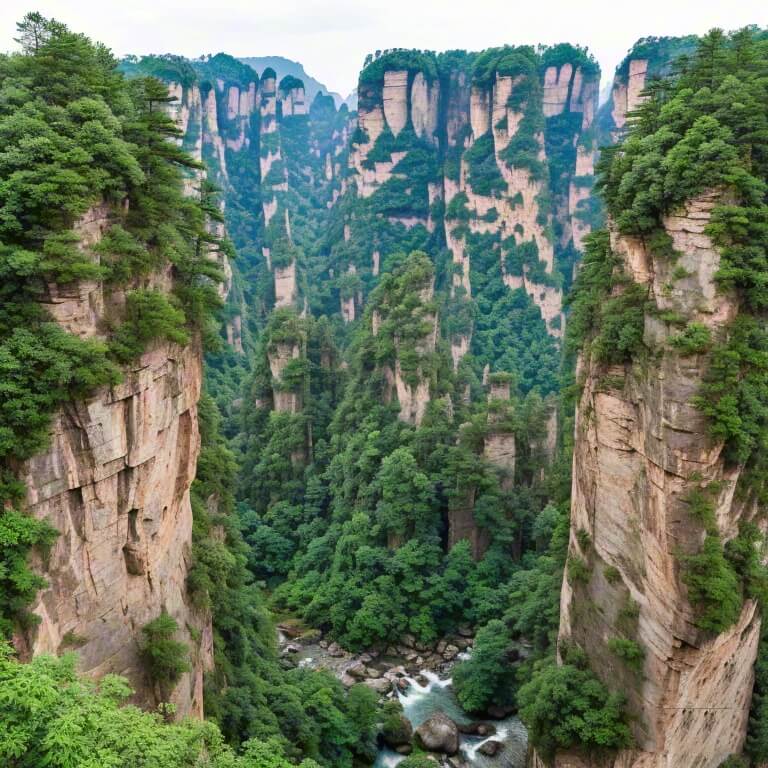
Jiuzhaigou, located in Zhangzha Town, Jiuzhaigou County, Aba Tibetan and Qiang Autonomous Prefecture in the northwest of Sichuan Province, is nestled in the southern section of the Minshan Mountains. It lies on the upper reaches of the Baishui River, a major tributary of the Jialing River in the Yangtze River system. With a drainage basin area of approximately 642.97 square kilometers, Jiuzhaigou is a World Natural Heritage site, a World Biosphere Reserve, a national AAAAA tourist attraction, a key national scenic spot, a national geological park, and a world-class nature reserve.

The terrain of Jiuzhaigou is higher in the south and lower in the north, with deep valleys and significant elevation differences. The northern edge of Jiuzhaigou, at the entrance, is only 2,000 meters above sea level, while the central peaks rise above 4,000 meters, and the southern edge reaches over 4,500 meters. The main valley stretches for more than 30 kilometers. Jiuzhaigou National Nature Reserve encompasses four scenic spots: Shuzheng Valley, Zechawa Valley, Rizhe Valley, and Zharu Valley. It features a water landscape dominated by plateau calcified lakes, calcified waterfalls, and calcified rapids, which are characterized by their large scale, diverse types, numerous quantities, beautiful forms, exquisite surfaces, and excellent environment. The water landscapes of Jiuzhaigou include multi-level waterfalls, colorful lakes, snow-capped peaks, and other natural scenery. Notable attractions include Wuhua Lake and Zhenzhu Beach Falls.
In terms of flora and fauna resources, Jiuzhaigou National Nature Reserve has a forest coverage rate exceeding 80%, with 38 species of lianas and 74 species of rare and protected plants in China. Additionally, the reserve serves as a habitat for 122 species of terrestrial vertebrates, including 21 species of mammals, 93 species of birds, 4 species of reptiles, and 4 species of amphibians. Jiuzhaigou National Nature Reserve is the core area and corridor zone for the giant panda A population in the Minshan Mountains, and it possesses a typical natural ecosystem, making it one of the core areas for biodiversity conservation nationwide.
Due to its unique natural landscapes and rich biodiversity, Jiuzhaigou was listed as a World Heritage site by UNESCO in 1992 and as a World Biosphere Reserve in 1997. These honors affirm the significant value of Jiuzhaigou in terms of ecological protection, scientific research, and nature education.
Regarding tourism information, Jiuzhaigou is open from 07:30 to 17:00 during the peak season (April 1st to November 15th) and from 08:30 to 17:00 during the off-peak season (November 16th to March 31st of the following year). Visitors can enter the scenic area during these hours. Ticket prices are 190 yuan/person during the peak season and 80 yuan/person during the off-peak season. Visitors can refer to Jiuzhaigou's official website or tourism platforms for the latest ticket prices, opening hours, and travel tips.
In general, Jiuzhaigou attracts numerous tourists with its unique natural landscapes and rich biodiversity. During their visit, tourists can not only enjoy the beautiful natural scenery but also learn about Jiuzhaigou's ecological protection, scientific research, and nature education.